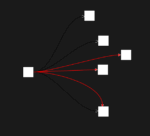Data visualization is the process of converting data into a graphical or visual format, in order to better understand and communicate the information it represents. There are many different techniques for data visualization, each with its own strengths and weaknesses, and choosing the right one for a particular dataset or application can be a challenging task. In this article, we will compare some of the most popular data visualization techniques, highlighting their key features and discussing when they are most appropriate to use.
One of the most common data visualization techniques is the bar chart. Bar charts are used to compare the values of different categories or groups, and are particularly useful for comparing quantities or frequencies. They are simple to understand and interpret, and can be easily created using software such as Excel or Google Sheets. However, bar charts can become cluttered and difficult to read when there are a large number of categories, or when the values of the categories are very different.
Another popular data visualization technique is the line chart. Line charts are used to track changes over time, and are often used to visualize trends or patterns. They are good for showing how values change over time, and are particularly useful for comparing multiple variables on the same chart. However, line charts can be difficult to interpret when there are a large number of data points, or when the values fluctuate significantly.
Scatter plots are another useful data visualization technique, and are often used to visualize the relationship between two variables. Scatter plots show the distribution of data points along the x-axis and y-axis, and can help to identify patterns or correlations. However, scatter plots can be difficult to interpret when there are a large number of data points, or when the data is heavily clustered.
Another popular data visualization technique is the pie chart. Pie charts are used to represent the proportions of different categories or groups, and are particularly useful for showing the composition of a whole. They are simple to understand and interpret, and are often used to represent data in the form of percentages. However, pie charts can be difficult to compare when there are many categories, or when the values are very different.
Finally, heat maps are a data visualization technique that is used to represent data in the form of a color-coded matrix. Heat maps are particularly useful for showing the relative values of different categories or groups, and can help to identify patterns or trends. However, heat maps can be difficult to interpret when the data is heavily skewed, or when there are many different categories.
In conclusion, there are many different data visualization techniques, each with its own strengths and weaknesses. Choosing the right technique for a particular dataset or application requires a careful consideration of the goals of the visualization, the nature of the data, and the audience for the visualization.

























